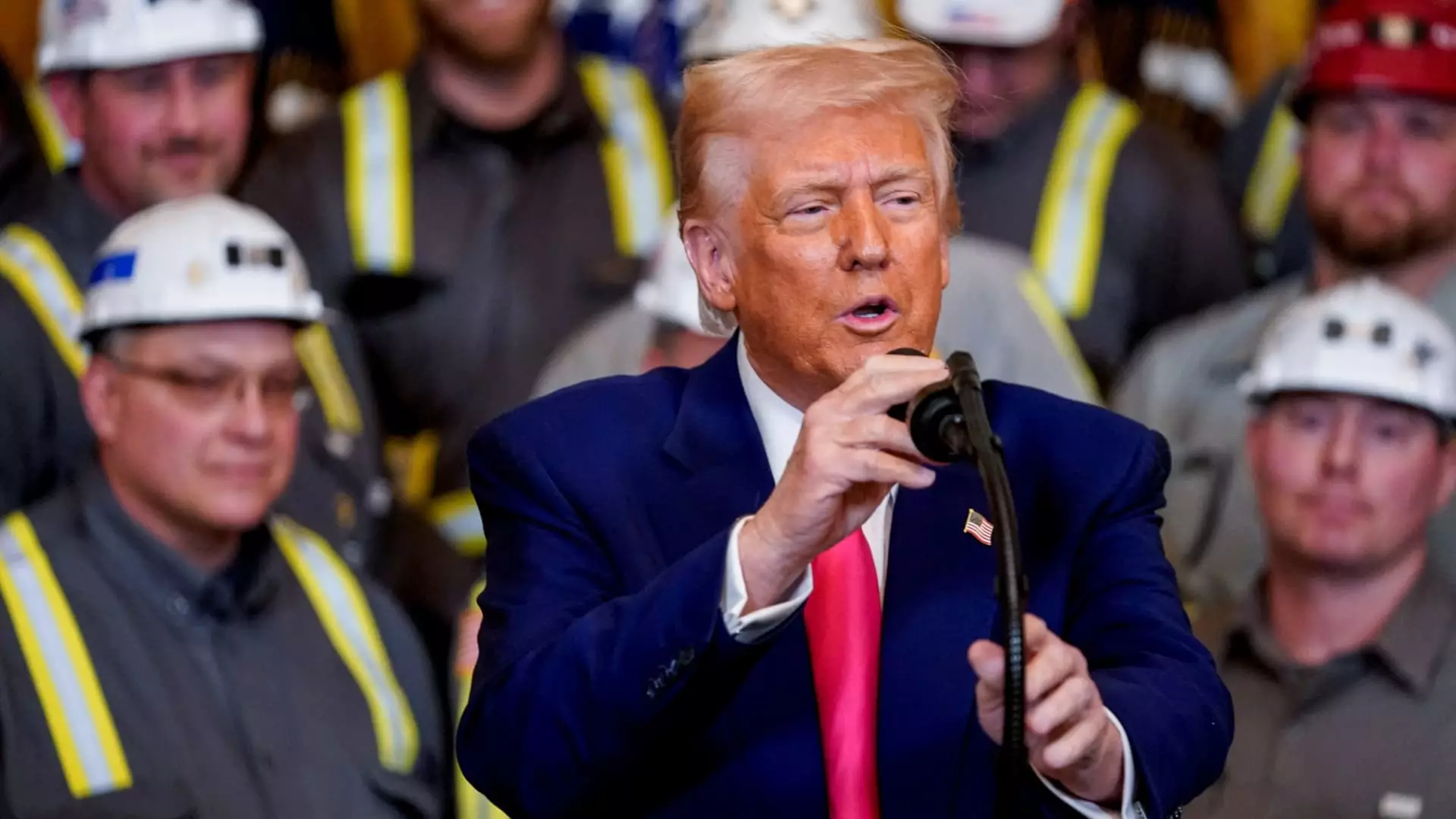President Donald Trump’s ardent passion for reviving the beleaguered coal industry in the United States presents a perplexing dichotomy in the context of modern energy needs and environmental imperatives. With a retreating view of America’s energy landscape, Trump seeks to align coal power generation with the rising demands of artificial intelligence (AI) data centers. His April executive directive assigning government agencies to scout for coal power infrastructure raises critical questions about the long-term viability of coal amid a world that is racing towards renewable energy and decarbonization.
Trump’s declaration to push coal as a backup power source not only showcases a nostalgic longing for a bygone era but also reflects an alarming disregard for the consequential impacts of carbon emissions. Despite his claims, coal remains one of the dirtiest energy sources, notable for spewing significant amounts of carbon dioxide into our atmosphere. The idea of staving off climate change by relying on “good, clean coal” is a romantic fiction that fails to resonate with the rigor of scientific consensus on sustainable energy sources.
Environmental Goals at Risk
The juxtaposition of Trump’s coal-centric vision against the tech industry’s environmental commitments paints a stark picture. Despite the rhetoric of revitalizing coal, major tech companies are heavily investing in renewable energy and nuclear solutions to curb emissions and embrace a greener future. This presents an ethically convoluted scenario wherein the tech sector, which has been a beacon of innovation and sustainability, could be inadvertently tethered to the fossil fuel narrative propagated by the political establishment.
The dissonance is palpable as executives from Amazon, Nvidia, and Anthropic sidestep inquiries about coal utilization, choosing instead to highlight the potential of natural gas. This raises the question: can a sector synonymous with progressive ideals genuinely ally with an energy source so closely associated with environmental degradation? It appears that the pressure to meet skyrocketing data demands might compel tech giants to lean on coal, but only as a bridge to cleaner substitutes. Compromising climate goals for the sake of immediate energy needs borders on hypocrisy.
A Lifeline or a Mirage for Miners?
For coal miners, Trump’s advocacy represents a tantalizing lifeline in an industry that has fallen from grace. The drastic decline in coal’s share of U.S. electricity generation—from 51% in 2001 to a mere 16% today—signals an impending extinction risk for coal miners. The political rhetoric surrounding coal has fueled a form of optimism among industry proponents, who cling to the possibility of “un-retiring” mothballed coal plants to satisfy the revived demand.
However, the vision of a resurgence feels less like a sustainable recovery and more like a suspension of inevitable decline. CEO James Grech of Peabody Energy portrays an optimistic landscape where coal plants are relaunched to meet the demands of AI data centers. But this oversimplified narrative neglects the fact that coal generation is being increasingly outclassed by natural gas and renewables. The notion that coal can shoulder the formidable energy demands of the future is not only fanciful, but also reckless.
The Reality of Energy Needs
While Trump’s orders reflect an inherent desire to invigorate the coal sector, they also expose a stark fundamental reality: energy needs are shifting, and the grid’s reliability hinges on adaptability to new technologies. The coal narrative may cheese off some voters; however, as progressive executives caution, focusing solely on fossil fuels—natural gas included—could delay vital decarbonization efforts. The specter of increasing electricity demands, projected to surge by 40% in the coming decades, will require a multi-faceted approach that harnesses the best available energy solutions, including renewables.
The hysteria surrounding coal as a remedy for grid reliability is disconcerting. Rather than seeing an existential crisis, we ought to embrace the opportunity to innovate, invest, and push for progressive energy reforms—not cling desperately to outdated power sources. Kevin Miller’s assertion that an “all of the above” approach is necessary is an acknowledgement of the realities the tech industry faces, yet it belies a broader truth: investing in coal would be a regressive move that detracts from long-term sustainability goals.
A Path Forward or a Step Back?
In analyzing the conundrum of coal’s future in the face of burgeoning AI demands, it’s evident that Trump’s directive is emblematic of a myopic view that fails to account for the myriad complexities of the energy sector. Coal may serve as a temporary stopgap for some, but the broader implications of a society clinging to fossil fuels overshadow the fleeting lifeline provided to a declining industry.
Rather than seeing coal as a necessary evil, it is paramount to recognize it as a cautionary tale of dependency—a reminder that while meeting today’s demands is critical, long-term survival and integrity must navigate through the principles of sustainability and innovation. The energy future lies not in halting progress but in advancing toward a cleaner, more resilient energy infrastructure. Your next moves, America, should not be dictated by nostalgia for coal but should instead embrace the winds of change that usher in renewable alternatives, ensuring a greener legacy for generations to come.

